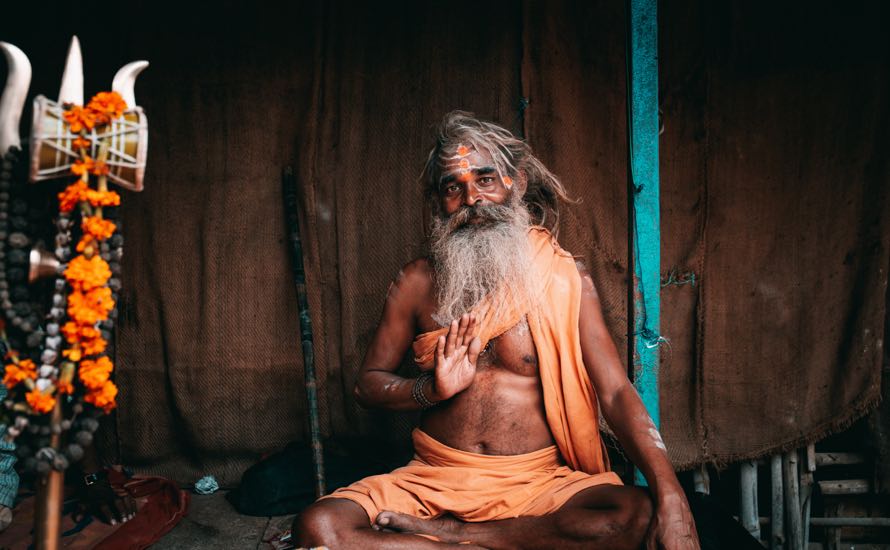Business ethics have existed since bartering started, with philosophers from Aristotle to Rawls discussing concepts of justice in monetary terms. In a modern sense, business ethics started in the United States in the 1970s with the rise of anti-big business protest groups. Business schools have taken it as their responsibility to teach ethical practices to students, even incorporating mandatory courses on the subject. With ethical dilemmas existing every day, it is becoming increasingly important to discuss the concepts of fairness and ethics when thinking about employees, customers, suppliers, shareholders, and the general public.
In this article, I want to share with you what I found to be the simplest yet most interesting ethics case during my MBA.
Parable of the Sadhu
The case was based on a real incident faced by Bowen H. McCoy, a Morgan Stanley employee, who in 1989 was climbing across the mountains of Nepal headed to a holy village. He was in the middle of the hike when he and three other groups of hikers discovered a Sadhu, one of the holy Nepalese men who wanders the countryside asking for food.
The man was wearing only a few pieces of clothing and shivering from the cold.
Some people from the hiking groups gave him warm clothes, food and drink, but that is where their assistance ended. One person argued that they should carry the Sadhu to the nearest village, but no one else offered to help. Each of the other people in the hiking groups were from different countries and each offered a different reason for refusing to stop the hike. They left the Sadhu lying on a rock in the sun and continued their journey. No one knows if the man survived.
The story describes how each of the group members were focused so heavily on reaching a holy place, that they ignored their ethical responsibilities to a holy man.
The story highlights some of the ethical issues that can come up in a business context.
Individual vs corporate goals
The story highlights the tension that can arise between corporate goals and individual goals. In the story, reaching the holy village was the single mission towards which all of the focus of the groups was directed. None of the individual hikers viewed it as their ethical responsibility to take care of the Sadhu. One of the team members actually wanted to stay behind and help the holy man but he didn’t get any support from the other group members.
Cultural differences
Each of the group members was from a different country. With only one person wanting to act in an ethical way, without any leadership position or common cultural values to draw on, it was impossible for him to convince the rest of the group to cooperate and save the Sadhu.
Decision making under time pressure
The hikers had limited time to make a decision since the sun would soon melt the steps carved in the snow needed to climb the mountain pass. Often times in the business world, time pressures influence people to act by instinct and inertia rather than with logic and humanity.
Public vs private decisions
Often what we say we will do publicly and what we actually do in private are two different things. What made this case so memorable was the discussion that erupted in the classroom when the Professor suggested we divide into two groups: the ones who would stay behind to bring the Sadhu back to the village and the ones who would continue the journey.
Around 90% of the class said that they would have stayed behind to help the Sadhu even if it meant not reaching the holy village.
One of the students from the group that would continue the journey made a memorable point: “You are only choosing that side and saying you would stay behind to help the Sadhu because we are having a public discussion. But, if you were to actually be on the mountain, you would most likely continue your journey. At least our group is being honest.”
Final thoughts
In the business world, we will often be faced with difficult ethical decisions for which there is no definitive right answer. Even in the case of the Sadhu, the point could be made that the Sadhu chose to go into the mountains because of his religious beliefs, and so by bringing him back to the village the hikers would be thwarting his goals.
The point is to always stop and think before deciding. Often there is a thin line between right and wrong which can be difficult to notice when pressed for time and working with a diverse team of individuals, each with different upbringings and conflicting goals.
Tringa Krasniqi holds an MBA degree from The George Washington University. She is the founder and consultant at Ivy Journey, an educational consulting firm for gaining admission to universities and winning scholarships.
Image: Unsplash

2 replies on “Parable of the Sadhu”
If you want a parallel, the story of the good Samaritan in the Bible will be applicable.
Point well taken, Mark!